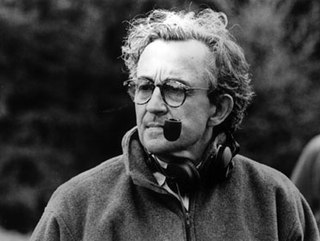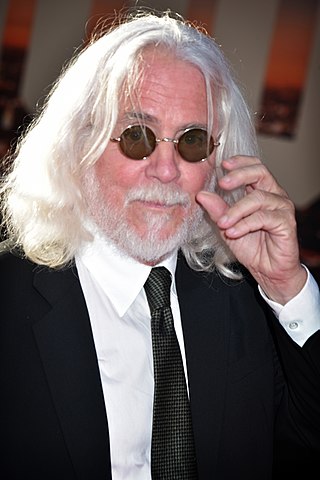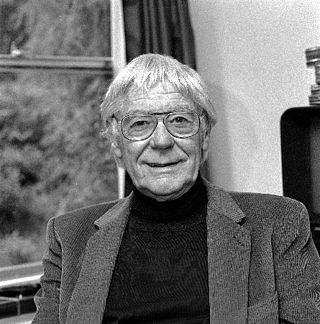Related Research Articles

Gary Snyder is an American poet, essayist, lecturer, and environmental activist. His early poetry has been associated with the Beat Generation and the San Francisco Renaissance and he has been described as the "poet laureate of Deep Ecology". Snyder is a winner of a Pulitzer Prize for Poetry and the American Book Award. His work, in his various roles, reflects an immersion in both Buddhist spirituality and nature. He has translated literature into English from ancient Chinese and modern Japanese. For many years, Snyder was an academic at the University of California, Davis, and for a time served as a member of the California Arts Council.

Robert Joseph Flaherty, was an American filmmaker who directed and produced the first commercially successful feature-length documentary film, Nanook of the North (1922). The film made his reputation and nothing in his later life fully equaled its success, although he continued the development of this new genre of narrative documentary with Moana (1926), set in the South Seas, and Man of Aran (1934), filmed in Ireland's Aran Islands. Flaherty is considered the father of both the documentary and the ethnographic film.
The Academy Award for Best Documentary Feature Film is an award for documentary films. In 1941, the first awards for feature-length documentaries were bestowed as Special Awards to Kukan and Target for Tonight. They have since been bestowed competitively each year, with the exception of 1946. Copies of every winning film are held by the Academy Film Archive.

Maximilian Schell was a Swiss actor. He won the Academy Award for Best Actor for the 1961 American film Judgment at Nuremberg, his second acting role in Hollywood. Born in Austria, his parents were involved in the arts and he grew up surrounded by performance and literature. While he was still a child, his family fled to Switzerland in 1938 when Austria was annexed by Nazi Germany, and they settled in Zürich. After World War II ended, Schell took up acting and directing full-time. He appeared in numerous German films, often anti-war, before moving to Hollywood.

Louis Marie Malle was a French film director, screenwriter, and producer who worked in both French cinema and Hollywood. Described as "eclectic" and "a filmmaker difficult to pin down", Malle made documentaries, romances, period dramas, and thrillers. He often depicted provocative or controversial subject matter.

The Directors Guild of America Awards are issued annually by the Directors Guild of America. The first DGA Award was an "Honorary Life Member" award issued in 1938 to D. W. Griffith. The statues are made by New York firm, Society Awards.
Roman Kroitor was a Canadian filmmaker who was known as a pioneer of Cinéma vérité, as the co-founder of IMAX, and as the creator of the Sandde hand-drawn stereoscopic 3D animation system. He was also the original inspiration for The Force. His prodigious output garnered numerous awards, including two BAFTA Awards, three Cannes Film Festival awards, and two Oscar nominations.
James Jerome Hill II was an American filmmaker and artist known for his award-winning documentary and experimental films, one of which won him an Academy Award.

Robert Bridge Richardson, ASC is an American cinematographer. Known for his trademark aggressively bright highlight as well as shapeshifting style, he is one of three living persons who has won the Academy Award for Best Cinematography three times, the others being Vittorio Storaro and Emmanuel Lubezki. He has frequently collaborated with Oliver Stone, Quentin Tarantino, and Martin Scorsese.

Solomon Halbert Snyder is an American neuroscientist who has made wide-ranging contributions to neuropharmacology and neurochemistry. He studied at Georgetown University, and has conducted the majority of his research at the Johns Hopkins School of Medicine. Many advances in molecular neuroscience have stemmed from Snyder's identification of receptors for neurotransmitters and drugs, and elucidation of the actions of psychotropic agents. He received the Albert Lasker Award for Basic Medical Research in 1978 for his research on the opioid receptor, and is one of the most highly cited researchers in the biological and biomedical sciences, with the highest h-index in those fields for the years 1983–2002, and then from 2007 to 2019.

ITVS is a service in the United States which funds and presents documentaries on public television through distribution by PBS and American Public Television, new media projects on the Internet, and the weekly series Independent Lens on PBS. Aside from Independent Lens, ITVS funded and produced films for more than 40 television hours per year on the PBS series POV, Frontline, American Masters and American Experience. Some ITVS programs are produced along with organizations like Latino Public Broadcasting and KQED.

Albert Haanstra was a Dutch director of films and documentaries. His documentary Glass (1958) won the Academy Award for Documentary Short Subject in 1959. His feature film Fanfare (1958) was the most visited Dutch film at the time, and has since only been surpassed by Turkish Delight (1973).

Robert Frost: A Lover's Quarrel With the World is a 1963 American documentary film directed by Shirley Clarke and starring Robert Frost.
Colin Archibald Low was a Canadian animation and documentary filmmaker with the National Film Board of Canada (NFB). He was known as a pioneer, one of Canada's most important filmmakers, and was regularly referred to as "the gentleman genius". His numerous honors include five BAFTA awards, eight Cannes Film Festival awards, and six Academy Award nominations.
Robert Clifford Jones was an American film editor, screenwriter, and educator. He received an Academy Award for the screenplay of the film Coming Home (1978). As an editor, Jones had notable collaborations with the directors Arthur Hiller and Hal Ashby. Jones was nominated three times for the Academy Award for Best Film Editing: It's a Mad, Mad, Mad, Mad World (1963), Guess Who's Coming to Dinner (1967), and Bound for Glory (1976).
City of Gold is a 1957 Canadian documentary film by Colin Low and Wolf Koenig, chronicling Dawson City during the Klondike Gold Rush. It made innovative use of archival photos and camera movements to animate still images, while also combining narration and music to bring drama to the whole. Its innovative use of still photography in this manner has been cited by Ken Burns as the source of inspiration for his so-called Ken Burns effect, a type of panning and zooming effect used in video production to animate still images.

The Titan: Story of Michelangelo is a 1950 German documentary film about the painter and sculptor Michelangelo. It won the Academy Award for Best Documentary Feature.

Robert Snyder was a documentary filmmaker who won an Academy Award in 1950 as producer of The Titan: Story of Michelangelo.
John Spotton C.S.C. was a Canadian filmmaker with the National Film Board of Canada.

Kim A. Snyder is an American filmmaker and producer. Previously, she spent some time contributing to Variety.
References
- ↑ Cort, David (1963). Social Astonishments. New York: Macmillan. p. 225. OCLC 282360.
This awful and awesome scene is shown in full color in Robert Snyder's The Hidden World, a beautiful movie in which one sees a female praying mantis ten feet tall, a sight to shake the stoutest heart.
- ↑ "The 31st Academy Awards (1959) Nominees and Winners". oscars.org. Retrieved May 31, 2019.